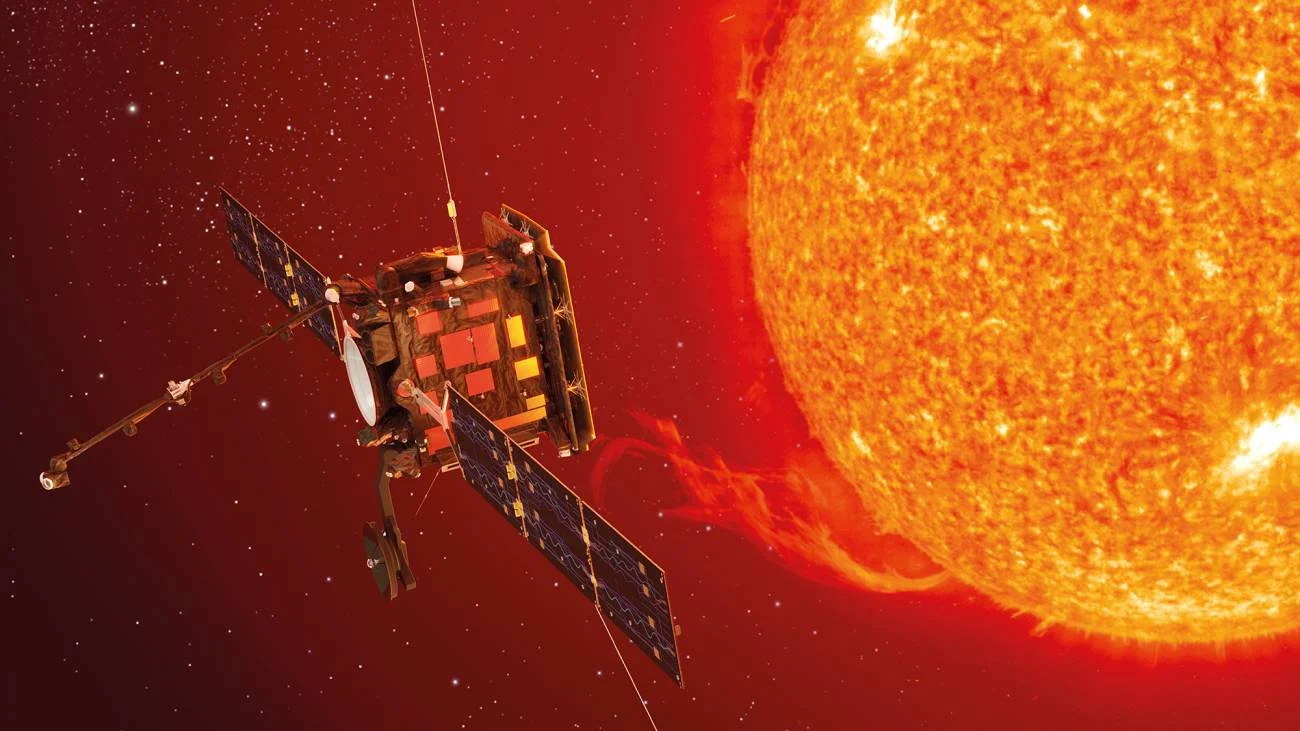Solar Orbiter


Studying the Sun and magnetic activity in the heliosphere (ESA/NASA)

Solar Orbiter is a mission of the European Space Agency (ESA), with the participation of NASA. Launched on 10 February 2020, the mission is dedicated to solar and heliospheric physics. It will be the closest satellite to our host star, seeking to improve our understanding of the inner workings of the Sun, the development of the solar system, and the emergence of life.
The Solar Orbiter mission will help examine how the Sun creates and controls the heliosphere—the large bubble of charged particles that the solar wind carries into the interstellar medium. The space probe will combine in situ observations with remote sensing to obtain new information on the solar wind, the heliospheric magnetic field, solar energetic particles, transient interplanetary disturbances, and the Sun's magnetic field.
Solar Orbiter will provide close-up, high-latitude observations of the Sun, allowing observations of the solar surface features and their connection to the heliosphere over much longer periods than have been possible so far from points close to the Earth. The view of the solar poles will help to understand how dynamo processes generate the Sun's magnetic field.
THE IEEC CONTRIBUTION
The IEEC researchers and engineers are part of the SO/PHI collaboration, responsible for the Polarimetric and Helioseismic Imager (PHI) instrument. Specifically, they are in charge of the hardware electronics and firmware of the image stabilisation system.
On the other hand, the IEEC also collaborates providing scientific support to the development of the Energetic Particle Detector (EPD) instrument, led by the Universidad de Alcalá de Henares. They are also in charge of the development of computational codes to analyse particle events useful to characterise the data provided by Solar Orbiter.
